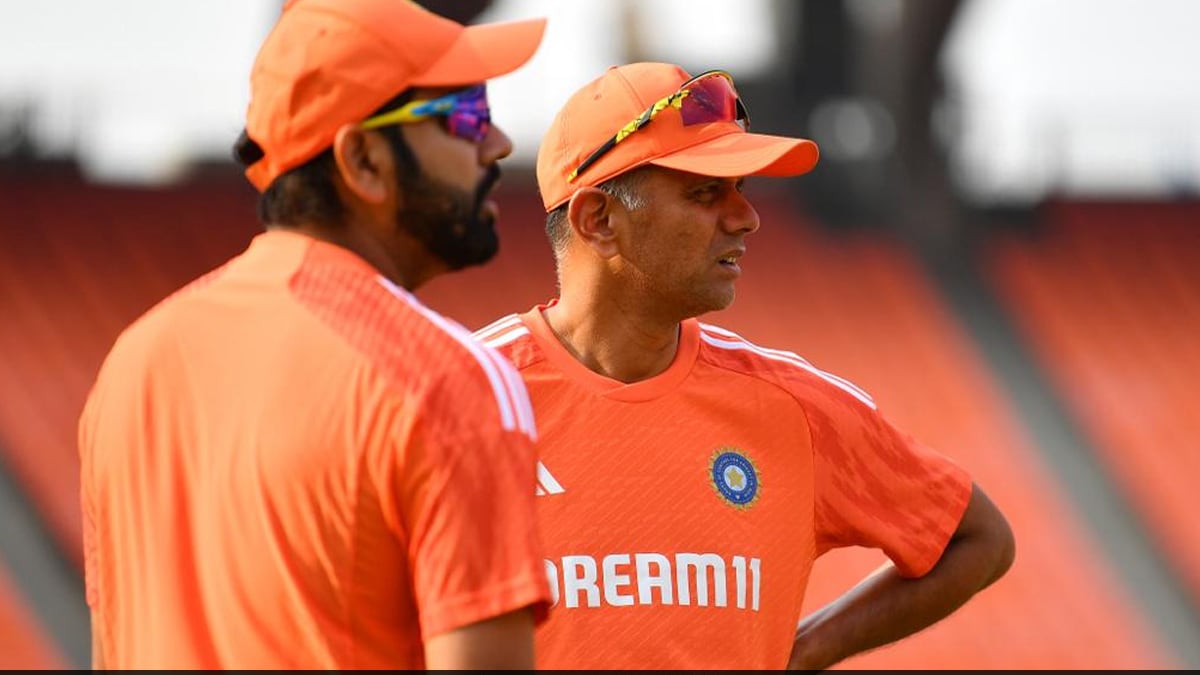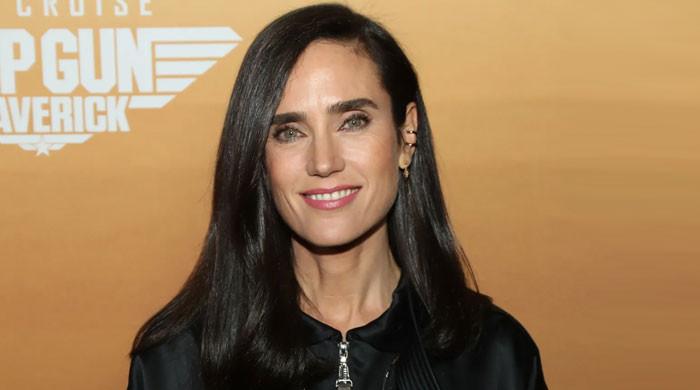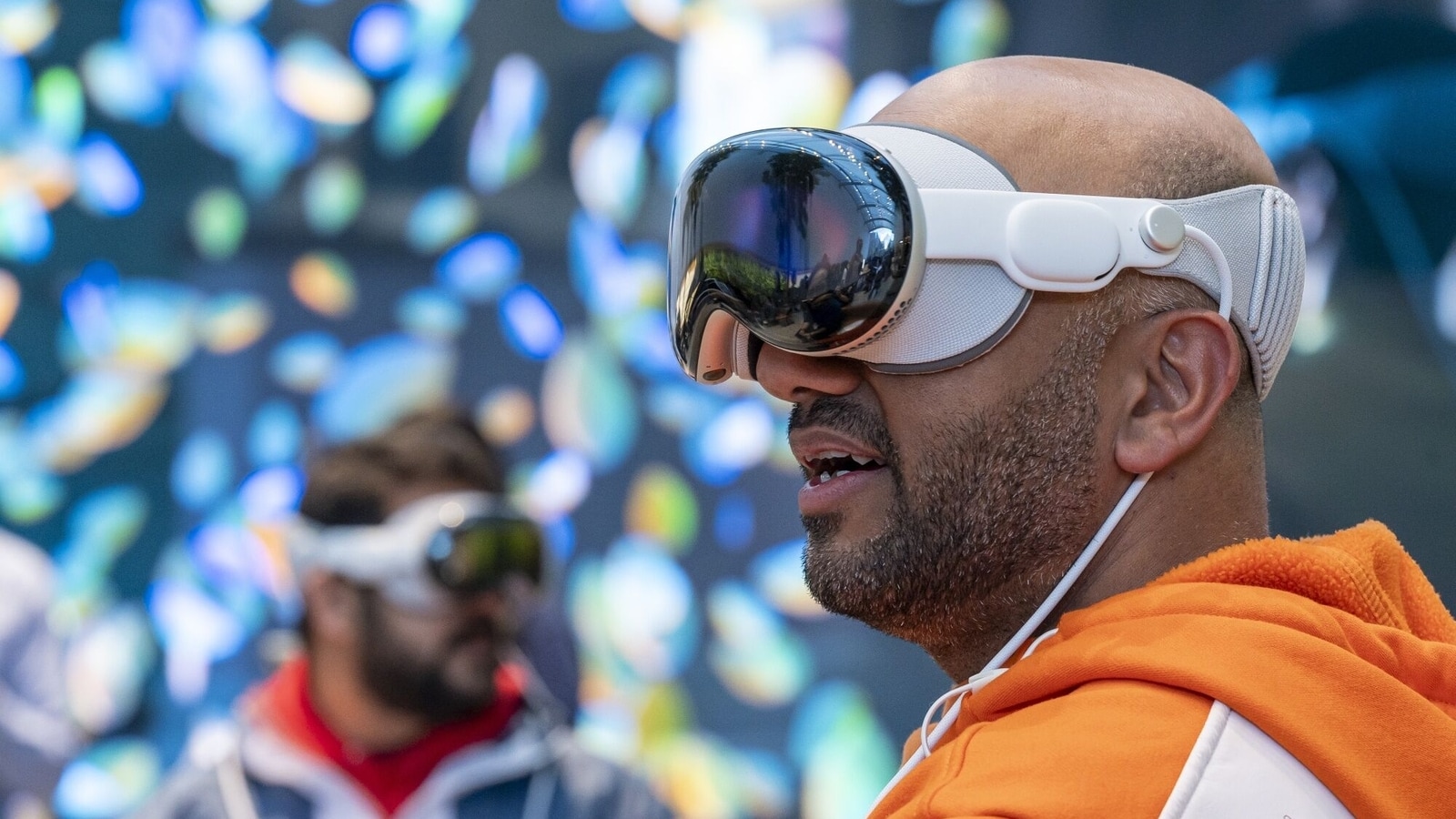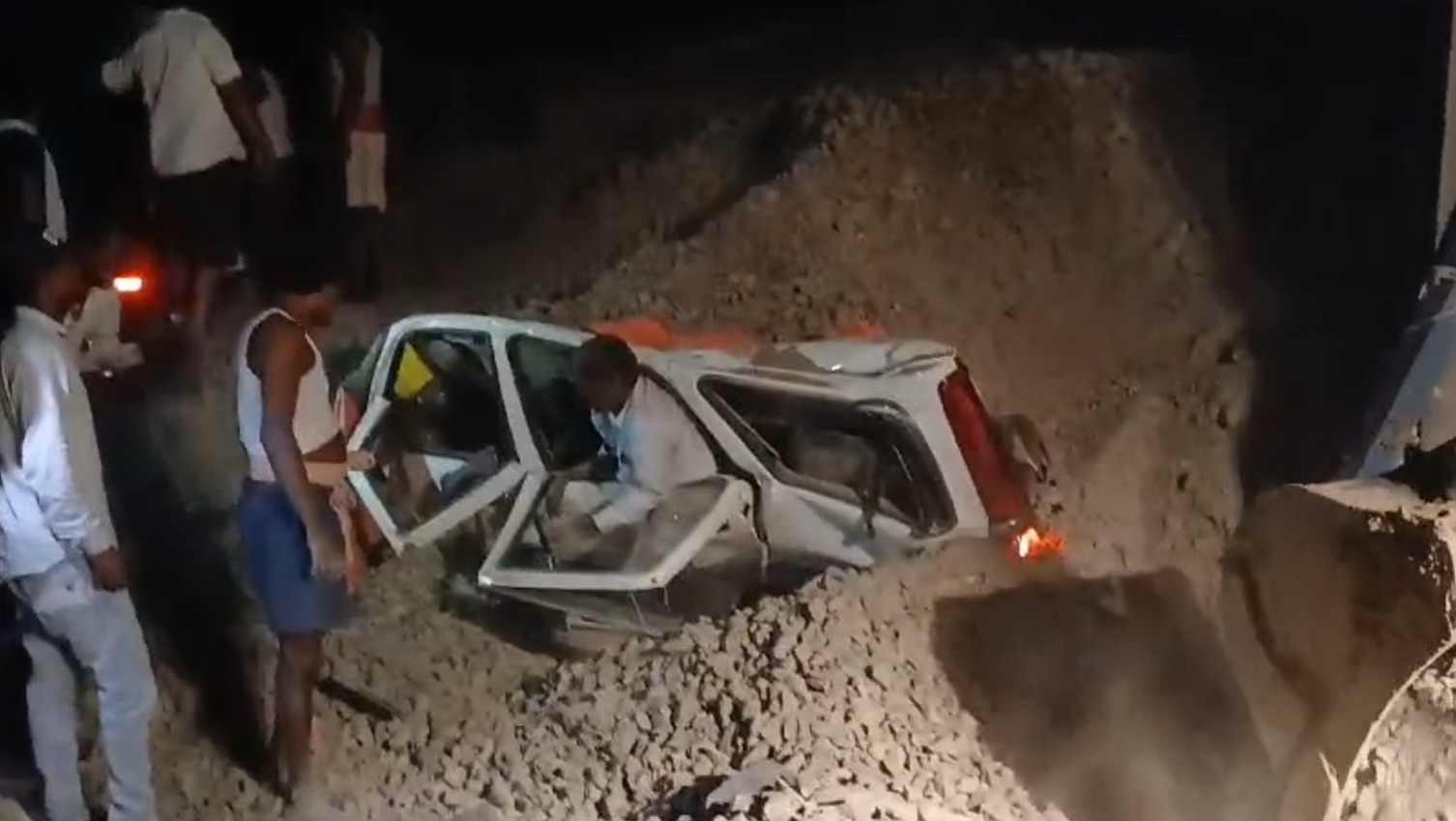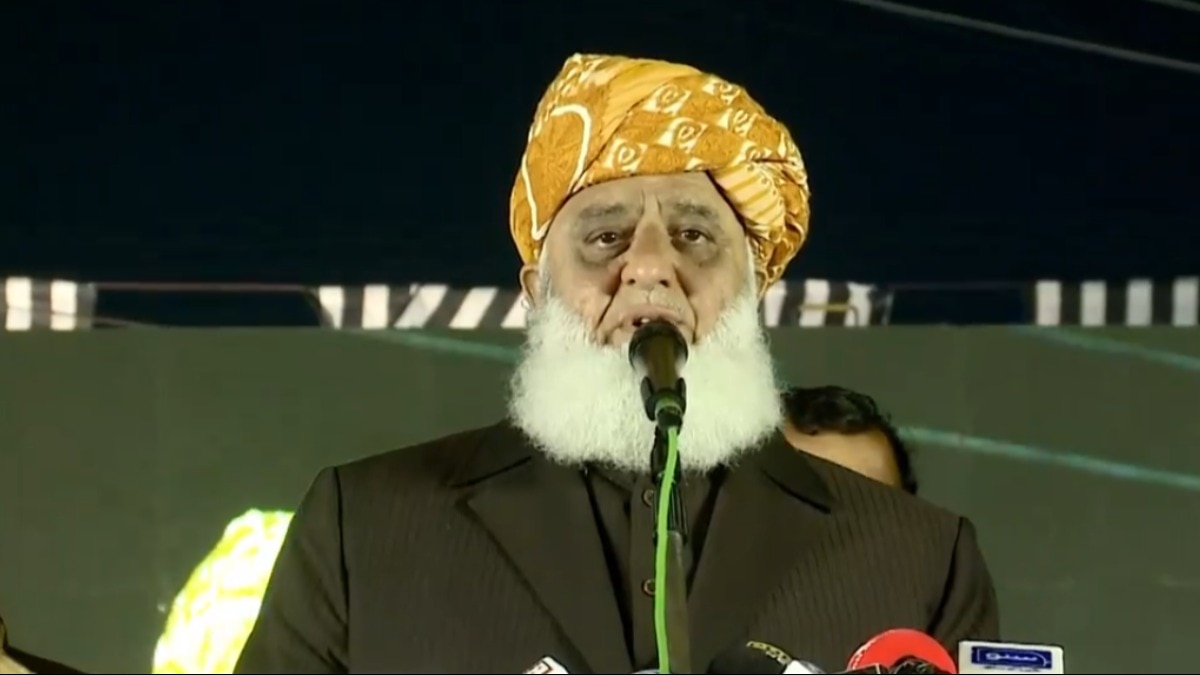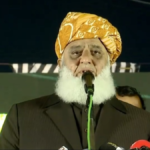Advocate Vishnu Shankar Jain, representing the Hindu side in the case, while reading the report of the survey by the Archaeological Survey of India (ASI), said that a large Hindu temple existed before the construction of the Gyanvapi Mosque in Varanasi.
A Varanasi court on Wednesday ordered that the Archaeological Survey of India (ASI) report on the Gyanvapi Masjid case be made public and provided to both parties.
The Varanasi district court had on July 21 last year directed the Archaeological Survey of India (ASI) to conduct a “detailed scientific survey” – including excavations wherever necessary – to determine whether the structure next to the Kashi Vishwanath temple The mosque located in was constructed. a temple.
Earlier in December, ASI had submitted the survey report on Gyanvapi Masjid complex in a sealed envelope in the district court.
The cleaning work of the Vazukhana or bathing area of the Gyanvapi Masjid was completed under the supervision of the District Magistrate of Varanasi following the Supreme Court order last week. The Supreme Court on January 16 had allowed a plea filed by a Hindu woman plaintiff for cleaning of the water tank at the Gyanvapi Mosque, which is located in an area that has been sealed.
All about Gyanvapi Masjid
The Gyanvapi Mosque has been the subject of extensive legal and historical debate as many Hindu groups believe that the mosque stood over a demolished portion of the Kashi Vishwanath Temple.
The mosque is located close to the iconic Kashi Vishwanath temple and the current judicial proceedings began when a group of women sought permission for daily prayers in front of the idols on its outer walls.
Many petitions have been filed in the Supreme Court, Allahabad High Court and Varanasi Court regarding the Gyanvapi Masjid case. According to reports, apart from the original case in the High Court, 18 petitions related to the Gyanvapi controversy are being heard in various courts in Varanasi.
The petitions seek to address various aspects of the dispute, including the alleged construction of the mosque by Mughal emperor Aurangzeb and the right to worship inside the disputed site.
How did the Gyanvapi Masjid case start?
In October 1991, a petition was filed before the Varanasi Civil Judge on behalf of the self-styled Jyotirlinga Lord Vishveshwar and five others, demanding the restoration of Gyanvapiland to the nearby Kashi Vishwanath temple. The petition demanded removal of Muslims from the premises and demolition of the mosque.
The 1991 petitioners had said that during the reign of Aurangzeb in the 16th century, a part of the Kashi Vishwanath temple was demolished and the mosque was built on his orders.
However, in 1997, the Varanasi Civil Court held that the suit was not maintainable under the Places of Worship Act, 1991. Subsequently, both the temple and mosque parties filed several revision petitions before the district court.
In 1998, the District Judge merged all the petitions and ordered the civil court to hear the dispute afresh after considering all the evidence. But the High Court stayed the order of Varanasi District Court. This moratorium continued for 22 years and the High Court continued to extend it.
In 2020, the plaintiff approached the Varanasi Civil Court to reopen the case, which had been stayed since 1998. The plaintiff cited a 2018 Supreme Court order which said the stay order would have to be rectified every six months. Since this was not done in the case, the civil court agreed to reopen the case.
The Allahabad High Court stayed the proceedings of the Kashi Vishwanath Temple-Gyanvapi Masjid case in the Varanasi court in 2021.
Gyanvapi case: Court battle till now
- The dispute started in 2019 after the Supreme Court’s decision in the Babri Masjid-Ram Janmabhoomi title dispute. In the second case, Varanasi-based lawyer Vijay Shankar Rastogi, who identified himself as the “next friend” of self-styled Jyotirlinga Lord Vishveshwar, filed a petition in the trial court claiming illegality in the construction of the Gyanvapi Mosque and the archaeological survey. demanded. Mosque.
- Varanasi Civil Judge directed ASI to conduct scientific survey of Gyanvapi complex. The Allahabad High Court stayed the order and clubbed the case with the original trial.
- In 2021, a third case was filed by five Hindu women, seeking permission from the court to hold daily prayers in “a shrine behind the western wall of the mosque complex” and protection of the idols. In 2022, the Varanasi court heard the petition of five women.
- The Varanasi court appointed Advocate Commissioner Ajay Kumar Mishra to inspect the site, “make videography of the proceedings” and submit a report. The Hindu side claimed that the survey team found a ‘Shivalinga’ in the ‘Vazukhana’ in the mosque premises.
- The survey of Gyanvapi Mosque was completed on 16 May. The Hindu side in the case has claimed that during the survey, a ‘Shivalinga’ was found inside a reservoir in the mosque premises. However, the Muslim side rejected this claim and said that it was only a ‘fountain’.
- The All India Muslim Personal Law Board (AIMPLB) termed the court order for videography as a clear violation of the Places of Worship Act, 1991. According to the Places of Worship Act, 1991, the law prohibits any change in one’s religious character. The place of worship existed in the same form as on August 15, 1947.
- In September 2022, the Varanasi district court rejected the Anjuman Committee’s petition challenging the Hindu worshipers’ plea (for the right to pray inside the disputed site) in the Gyanvapi case. After this, Anjuman Antejamia Masjid Committee (AIMC) challenged the order of the Varanasi court and filed a petition before the Allahabad High Court.
- In May 2023, the Varanasi district court agreed to hear a petition for an ASI survey following an Allahabad High Court order. The Supreme Court had ordered security of the area around the claimed ‘Shivalinga’, it was found after another court ordered a video survey of the complex.
- In June this year, the HC upheld the Varanasi district court order, which held that Hindu groups are not restricted by the Places of Worship (Special Provisions) Act, 1991, and sought the right to worship inside the Gyanvapi Mosque. The case is worth hearing.
- In July, the Varanasi court issued directions for a “scientific investigation” of the mosque complex by the ASI. District and Sessions Judge Ajay Krishna Vishwesh directed the ASI to “conduct a ground penetrating radar survey just below the three domes of the building and carry out excavation if necessary”.
- However, the Supreme Court on Monday put off the “detailed scientific survey” till 5 pm on July 26, saying “some time” needs to be given to appeal against the order.
- In August, the High Court upheld the district judge’s order allowing survey of the Gyanvapi Mosque. On August 4, the ASI began survey in the barricaded area, except the sealed part of the Gyanvapi complex.
- On November 30, the district court had asked the ASI to submit the survey report by December 11 after giving five extensions on September 6, October 5, November 2, November 17 and November 30.
- On December 11, the Varanasi district court granted another week’s time to the Archaeological Survey of India (ASI) to submit the scientific survey report of the Gyanvapi Mosque complex.
- The Archaeological Survey of India (ASI) submitted its report on the scientific survey of the Gyanvapi Mosque complex in the Varanasi district court on December 18.
Follow us on Google news ,Twitter , and Join Whatsapp Group of thelocalreport.in

